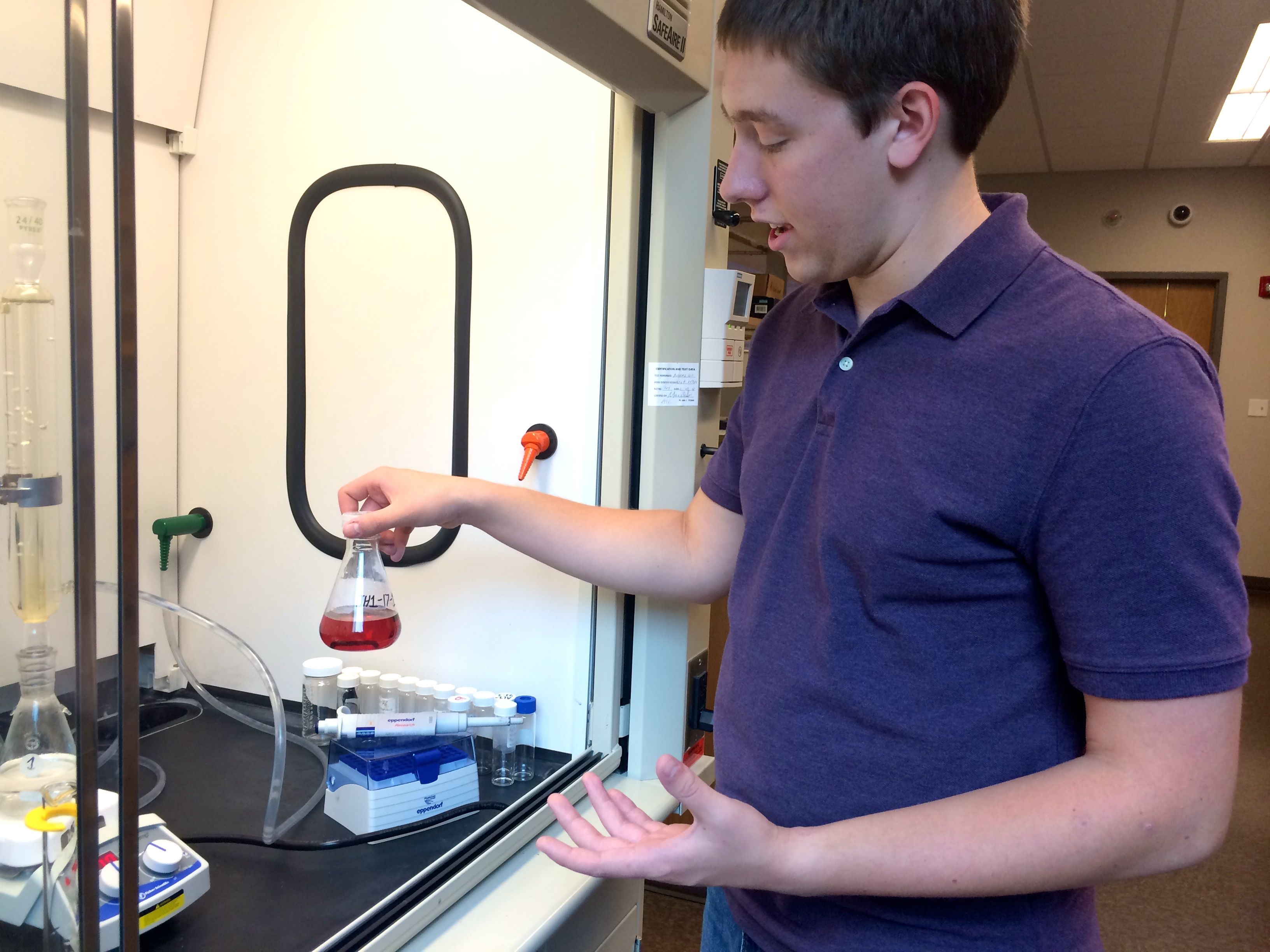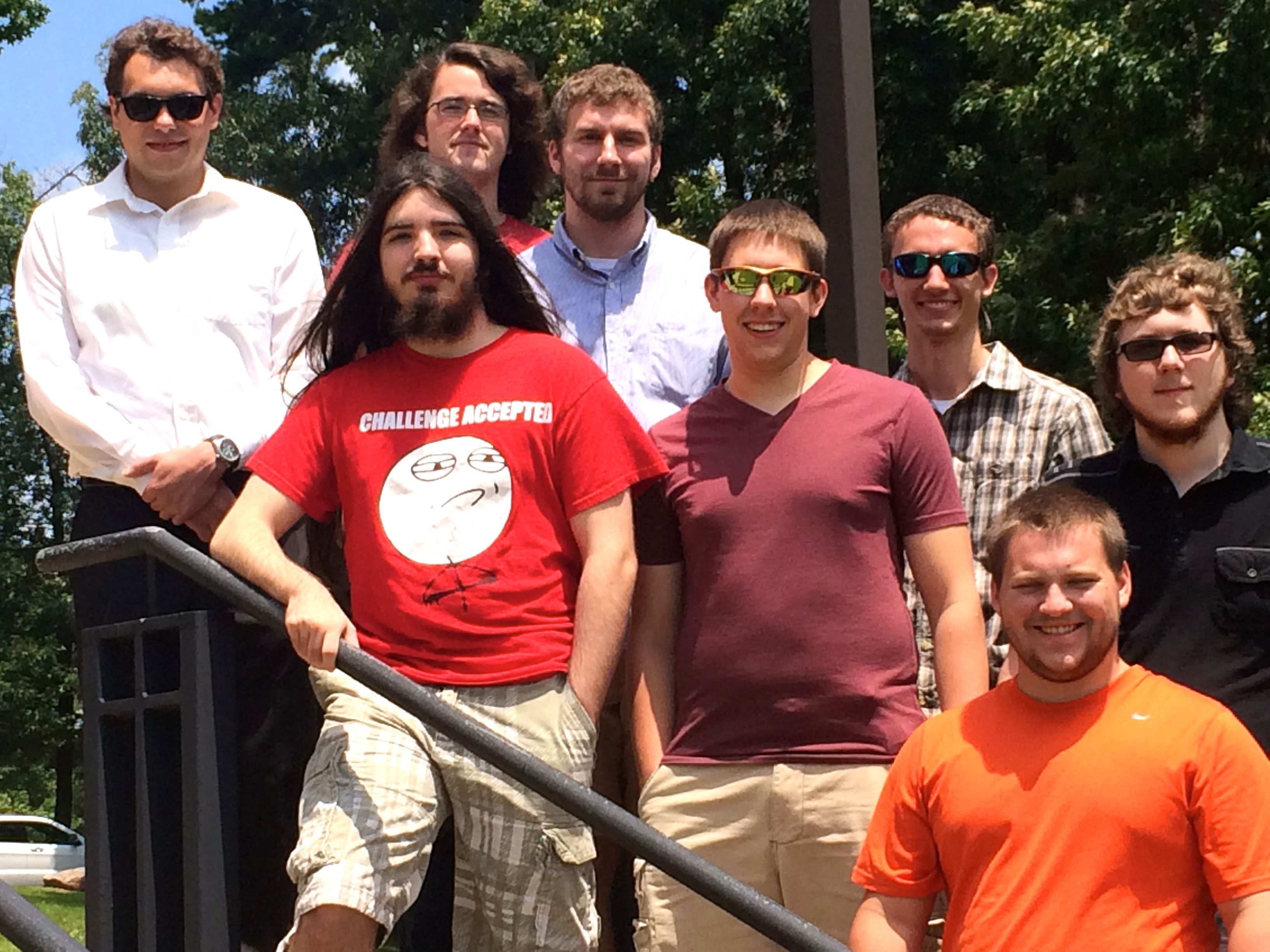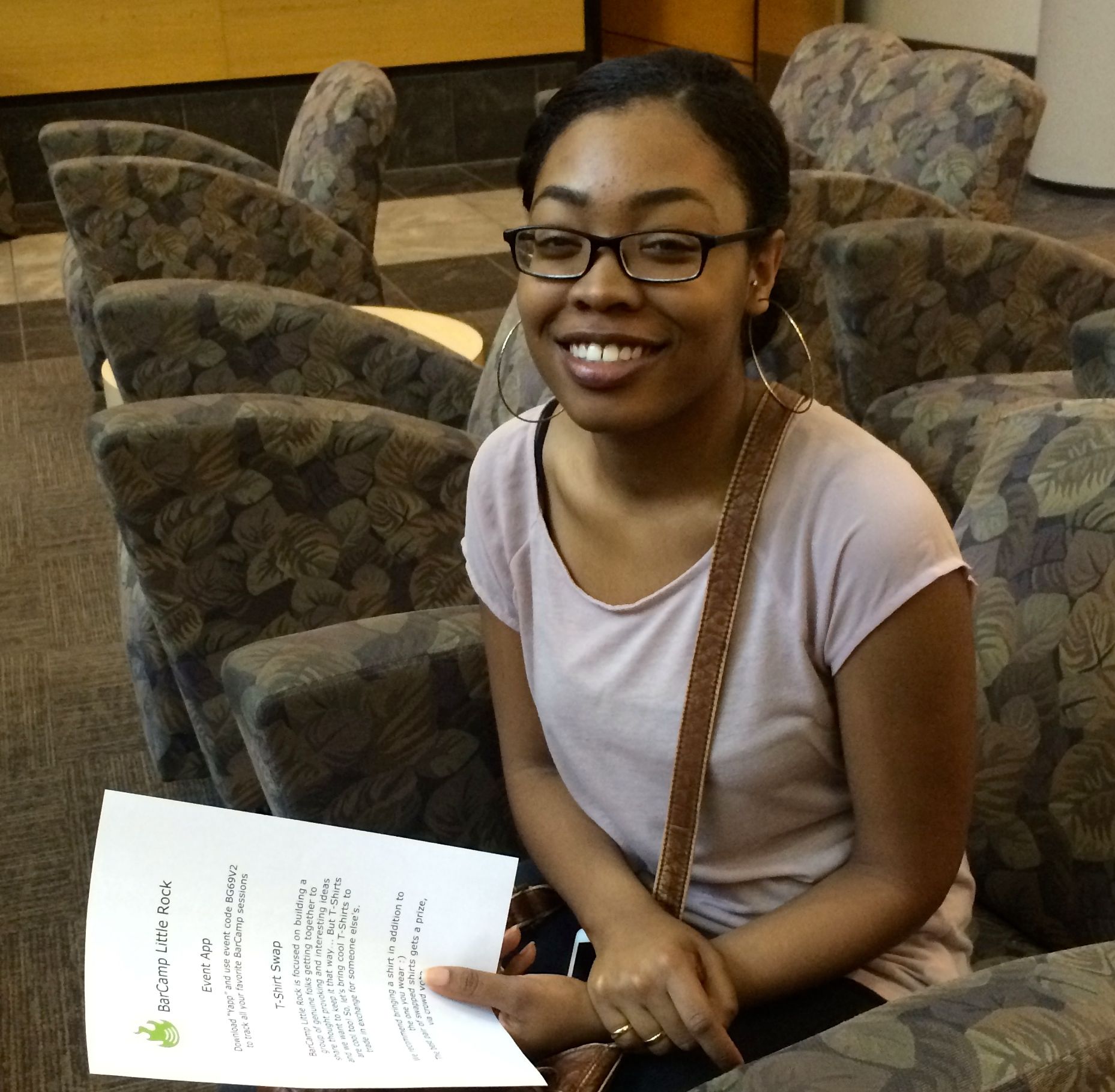From lab to consumer market: Program pairs STEM fields with entrepreneurship
In a second-floor lab at UALR’s Center for Integrative Nanotechnology, Josh Heathcock, 21, speaks with enthusiasm about the connection between carbon nanotubes and space elevators.

It turns out that the tube-shaped material – which is so tiny it is one ten-thousandth the thickness of a single strand of hair – could provide the foundational material for a cable strong enough to lift an elevator into outer space.
“I’m fascinated by cutting-edge technology,” Heathcock says.
“Eventually this technology will create an entire industry; carbon nanotubes will be incorporated into many things we use on a regular basis, whether cell phone batteries or cable elevators into space.”
Heathcock, an engineering and physics double major, is in good company at UALR.
He belongs to a cohort of Engineering and Information Technology SUPER (Summer Undergraduate Program of Entrepreneurship and Research) Scholars, designed for undergraduate students of engineering, physics, and computer/information science disciplines.
The ultimate aim of the two and a half month program is to boost domestic students in STEM fields, according to Dr. Abhijit Bhattacharyya, associate dean of UALR’s George W. Donaghey College of Engineering and Information Technology college.

Nine students from public and private schools across Arkansas have made research labs at UALR their home for several weeks, which will culminate with poster presentations and an awards ceremony at 1 p.m. Friday, Aug. 8, in the EIT Auditorium.
The program is now in its second year, although several new elements have been added to make the program even better this year, says Bhattacharyya.
For starters, on-campus accommodations are now offered for free in addition to the monthly $1,300 research stipend, he said.
Another addition is that students have been given the option to propose their own project, and one student exercised that option. Also new this year is a stronger emphasis on entrepreneurship, to give even greater exposure to the business realities of moving research from the lab to the consumer market.
The “entrepreneurship component” has been made especially strong this year due to the close collaboration with UALR TechLaunch and its Director, Jeff Stinson.
UALR computer science major Josiah Brann, 20, enthusiastically supports the entrepreneurial aspects of the program. He helped coordinate UALR’s first ever “Barcamp” last weekend, an “unconference” networking event to brainstorm innovative ideas and inventions.
Brann said it seems easier for researchers to acquire certain business skills, but it is a more challenging proposition for the business person to understand research.
“It is important for us as researchers to understand business. It puts the researcher in a better position to get their new technology or innovation in the public domain,” Brann said.
In fact, next week the scholars will have a platform to practice their business pitching skills during a “Lean Canvas Competition,” set for 1 p.m. Monday, Aug. 4. Four judges will score each presentation, and the top three students recognized at the Aug. 8 awards ceremony.
EIT will also host oral presentations on each EIT SUPER Project from 1 to 5 p.m. Aug. 7 and the top three presenters will be recognized on Aug. 8.

Each of the scholars is narrowly focused on research that has potentially broader implications for society. For their research component, students are paired with the appropriate faculty member to help them explore, discover, and transform ideas into reality to advance society and improve people’s lives.
The students have also worked with faculty from UALR’s Writing and Rhetoric program to hone their graduate school application writing skills.
Scholars are required to prepare applications that they can use for submission to the National Science Foundation Graduate Research Fellowship Program and other federal fellowship programs. The NSF program allows successful students to take their fellowships to any graduate school in the United States.
Program administrators say this cross-disciplinary approach makes the SUPER Scholar program notable.
“We are admittedly a bit biased, but I don’t think any program in the state offers as comprehensive a summer research program for STEM majors,” Dr. Bhattacharyya said.
The EIT SUPER Scholars and the title of their projects are:
• Lawrence Benzmiller, “Harvesting Wasted Wind Energy”
• Josiah Brann, “Development of a Secure Cloud-Based Mobile Personal Health Record (PHR) System”
• Silas Duke, “Redesigning Endotracheal Tube Using CFD Techniques”
• Joshua Heathcock, “Graphene Structures Synthesized with Noble Metal Nanoclusters for Biomolecular Detection”
• Samuel Jenkins, “An Elastic Metamaterial as Low-Frequency Vibration Energy Harvester”
• Jeffrey Long, “Modeling the Neural Mechanisms of Decision-Making”
• Thoren Paulson, Student Directed Project
• Shelby Sorrells, “Color Histogram Features Based Image Retrieval”
• Connor Young, “Visual-Based Face Emotion Toolkit”
For details on these projects or the EIT SUPER Scholar program in general, contact Dana Ball in the EIT Office of the Dean at 501.569.3285 or dgwhite@ualr.edu.